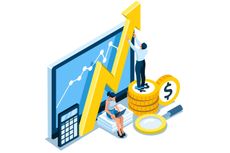How to Pay off Credit Card Debt
Keep up with credit card bills using these tried-and-true strategies.


If you are struggling to pay off your credit card bill, you are not alone. Credit card debt hit a record $1 Trillion in August. And inflation paired with higher interest rates may further complicate your efforts to avoid credit card debt.
After years of pandemic-related restrictions, it's easy to understand the urge to spend more on experiences and make up for lost time. Some of us pay our credit cards in full every month and never carry a balance. However, that’s not the case for everyone, especially millennials and older adults. If you’re carrying credit card debt, consider these strategies to eliminate or reduce what you owe — before it’s too late.
Know your credit score
To pay off credit card debt, start with your credit score to assess your options. Checking your credit score will not damage your credit.

Sign up for Kiplinger’s Free E-Newsletters
Profit and prosper with the best of expert advice on investing, taxes, retirement, personal finance and more - straight to your e-mail.
Profit and prosper with the best of expert advice - straight to your e-mail.
There are more ways to check your credit score for free than ever before. In addition, your bank or credit card company may give you a monthly credit score (called FICO or Vantage) free from one of the three credit bureaus (Experian, Transunion and Equifax.
If lenders consider you a good credit risk, you will have more options than if you have bad credit. Be sure to understand what makes up a good credit score; lenders generally consider FICO scores under 580 as “bad” and under 670 as “fair.”
A credit score is different from a credit report, which gives a general overview of your accounts, whether they are in good standing and your personal information.
Take stock of your debt
If you have balances on multiple credit cards, make a list that shows how much you owe on each, its interest rate, and the minimum monthly payment for each. A spreadsheet provides a handy way to update your progress, but pen and paper work just as well.
Balance transfer cards for good credit scores
If you have a good credit score, a balance transfer could help you get out from under your debt. Many banks offer balance-transfer cards for new customers. These cards often come with an introductory 0% annual percentage rate (APR) for a limited time — anywhere from 12 to 21 months, depending on the card.
There are three pitfalls to avoid when using balance-transfer cards.
First, be sure to pay off the balance before the introductory rate expires to avoid sliding again into debt. And resist the temptation to use the balance-transfer card to make new purchases, says Beverly Harzog, credit expert and author of Confessions of a Credit Junkie. You want to use the card to get out of debt, not add to it, she says.
Second, pay attention to the balance transfer fee, usually between 3% - 5%. If you are transferring $10,000, you might pay up to $500 in fees.
Finally, if you cancel your old card and your new balance-transfer card has a lower credit limit, it could affect your credit utilization ratio. This ratio measures how much of your allowed credit you are using on a given card. Racking up too much credit relative to your credit limit could lower your credit score, says Gerri Detweiler, author of The Ultimate Credit Handbook.
Options for poor or bad credit
Suppose your credit score isn’t high enough to meet the criteria for a 0% introductory rate on a balance transfer card. In that case, you may still qualify for a card with an introductory APR that's lower than your current card’s rate, Harzog says. Another option is a debt-consolidation loan from a bank or credit union with a rate lower than the rate you’re paying on your high-interest credit cards.
Strategies to pay off credit card debt
When you have balances on multiple credit cards, there are three approaches you can use to tackle the debt. The first is the avalanche approach. Begin with your cards with the highest interest rates and balances. Make the minimum payments on the lower-interest cards while devoting most of your available funds to paying down high-interest balances.
While the avalanche approach makes the most sense from a mathematical point of view, some people choose the snowball approach, paying off the low-balance debts first. Paying off your low-balance cards may motivate you to pay off all of your debts, even if it costs you more in interest.
Finally, there’s the blizzard approach, in which you start with the snowball and move to the avalanche. Start by paying off one low-balance card so you have one success under your belt, then move on to those with higher rates.
Paying off your balances will make it difficult to save. But try to put aside enough in an emergency fund to cover three months’ worth of expenses. When you’ve paid off your debts, you can ramp up your savings so you’ll be prepared for unexpected expenses, which will reduce the risk of falling back into debt.
Read More

To continue reading this article
please register for free
This is different from signing in to your print subscription
Why am I seeing this? Find out more here

Ellen writes and edits personal finance stories, especially on credit cards and related products. She also covers the nexus between sustainability and personal finance. She was a manager and sustainability analyst at Calvert Investments for 15 years, focusing on climate change and consumer staples. She served on the sustainability councils of several Fortune 500 companies and led corporate engagements. Before joining Calvert, Ellen was a program officer for Winrock International, managing loans to alternative energy projects in Latin America. She earned a master’s from the U.C. Berkeley in international relations and Latin America.
-
 How to Assess the Impact of Your Charitable Giving
How to Assess the Impact of Your Charitable GivingHere are five simple ways to 'do this, not that' when trying to find out from a nonprofit what kind of impact your donations are having.
By Catherine Crystal Foster Published
-
 How a Two-Year Installment Sale Strategy Can Save on Taxes
How a Two-Year Installment Sale Strategy Can Save on TaxesWhen selling property or other substantially appreciated asset, you could spread the taxes over two years to save big bucks. Following the rules is critical, though.
By Derek A. Miser, Investment Adviser Published
-
 More Signs of Belt-Tightening and a Slowing Economy: The Kiplinger Letter
More Signs of Belt-Tightening and a Slowing Economy: The Kiplinger LetterThe Kiplinger Letter Although fewer banks are tightening lending standards, more businesses and households are feeling the squeeze.
By Rodrigo Sermeño Published
-
 When Renting Is Smarter Than Buying
When Renting Is Smarter Than Buyingreal estate There are some situations when renting is smarter than buying. You're not necessarily throwing your money away when you rent.
By Miriam Cross Published
-
 The Fed Holds Interest Rates Steady
The Fed Holds Interest Rates SteadyThe Fed cautions that inflation remains high and it is prepared to adjust its monetary policy ‘as appropriate if risks emerge.’
By Esther D’Amico Published
-
 5 Ways to Shop for a Low Mortgage Rate
5 Ways to Shop for a Low Mortgage RateBecoming a Homeowner Rates are high this year, but you can still find an affordable loan.
By Daniel Bortz Published
-
 Banks Lost Billions on Bad Loans Last Quarter: Kiplinger Economic Forecasts
Banks Lost Billions on Bad Loans Last Quarter: Kiplinger Economic ForecastsEconomic Forecasts Bank deposits are also down, and more people are tapping into their savings.
By Rodrigo Sermeño Published
-
 Bond Yields Highest Since 2008
Bond Yields Highest Since 2008The yield on the 10-year Treasury increased 1.6 basis points to reach 4.258% on Wednesday afternoon, up from 4.22% on Tuesday. This is the highest level it had been since June 13, 2008.
By Erin Bendig Published
-
 What Is the Federal Funds Rate?
What Is the Federal Funds Rate?The federal funds rate can impact a host of borrowing costs, and thus the entire U.S. economy.
By Jeff Reeves Last updated
-
 Is It Prime Time for Money Market Funds?
Is It Prime Time for Money Market Funds?The Fed's interest rate hike could be a boon for savings accounts. Here's why.
By Seychelle Thomas Published